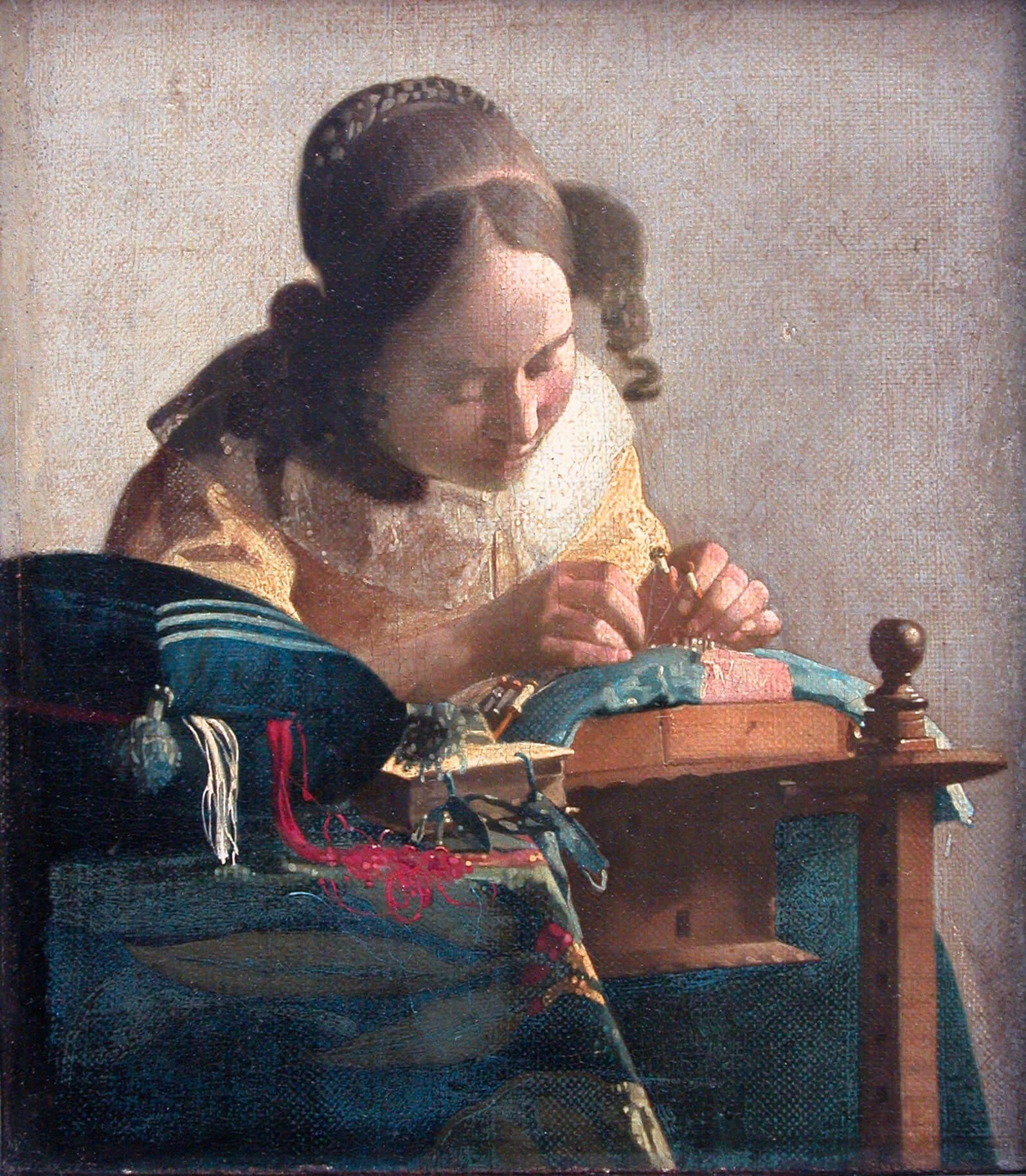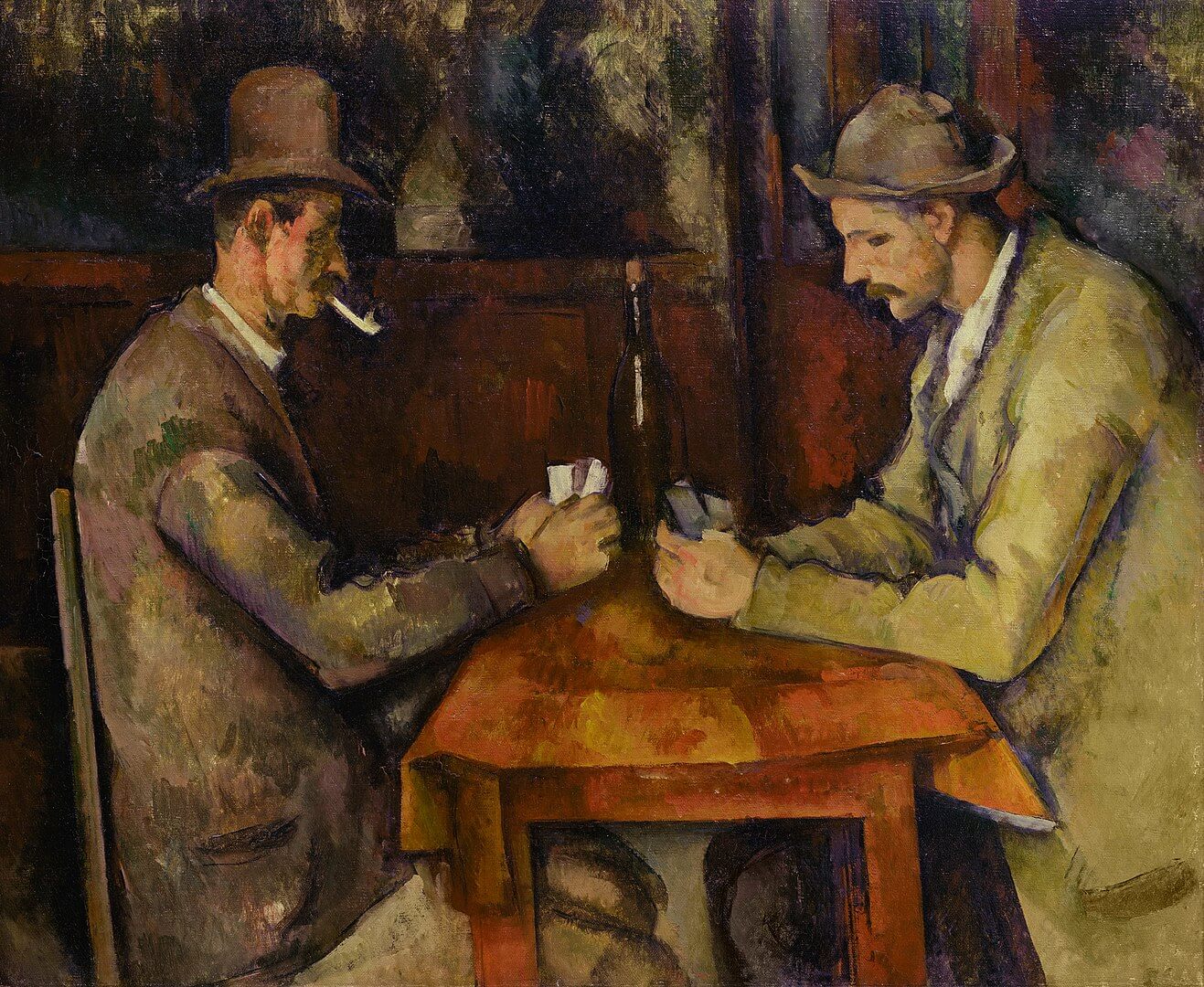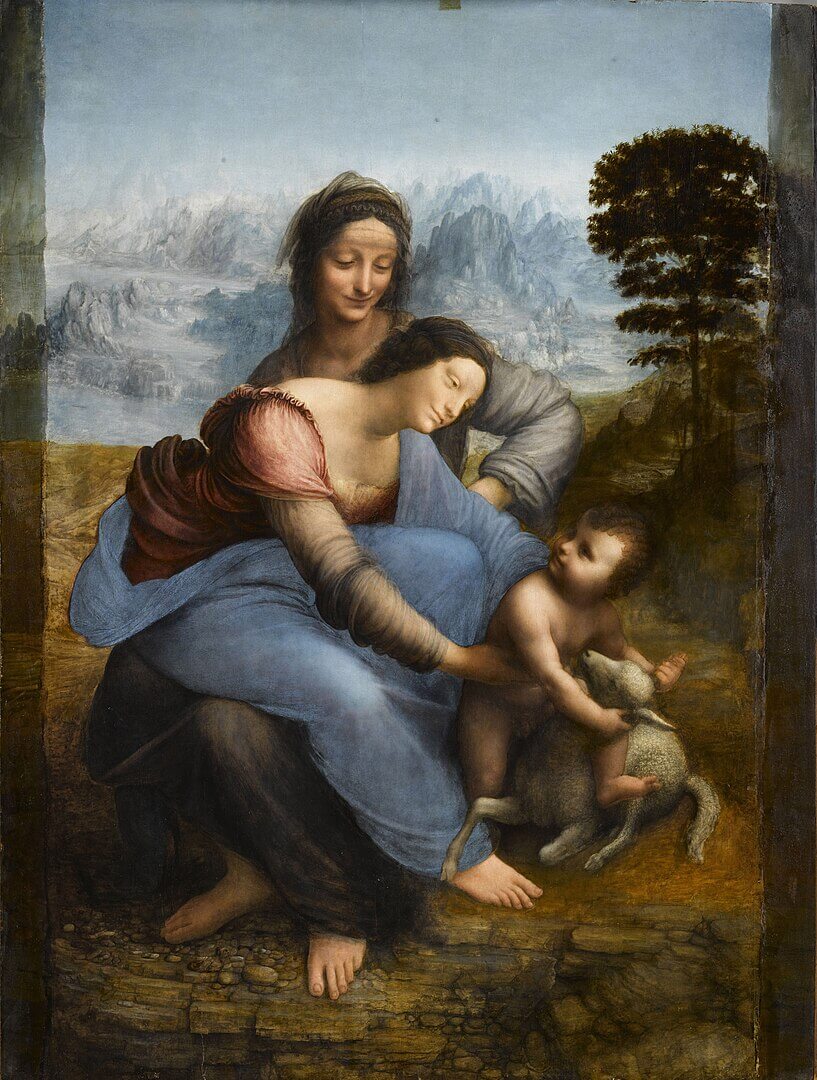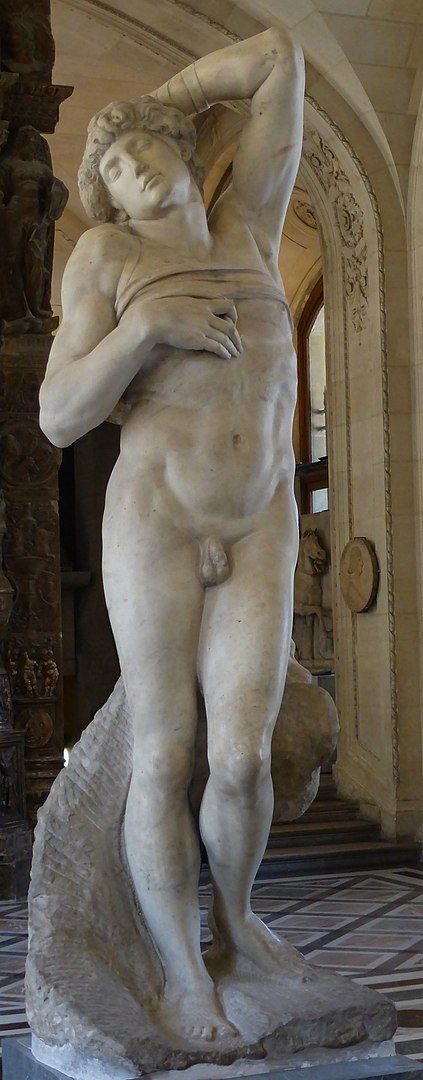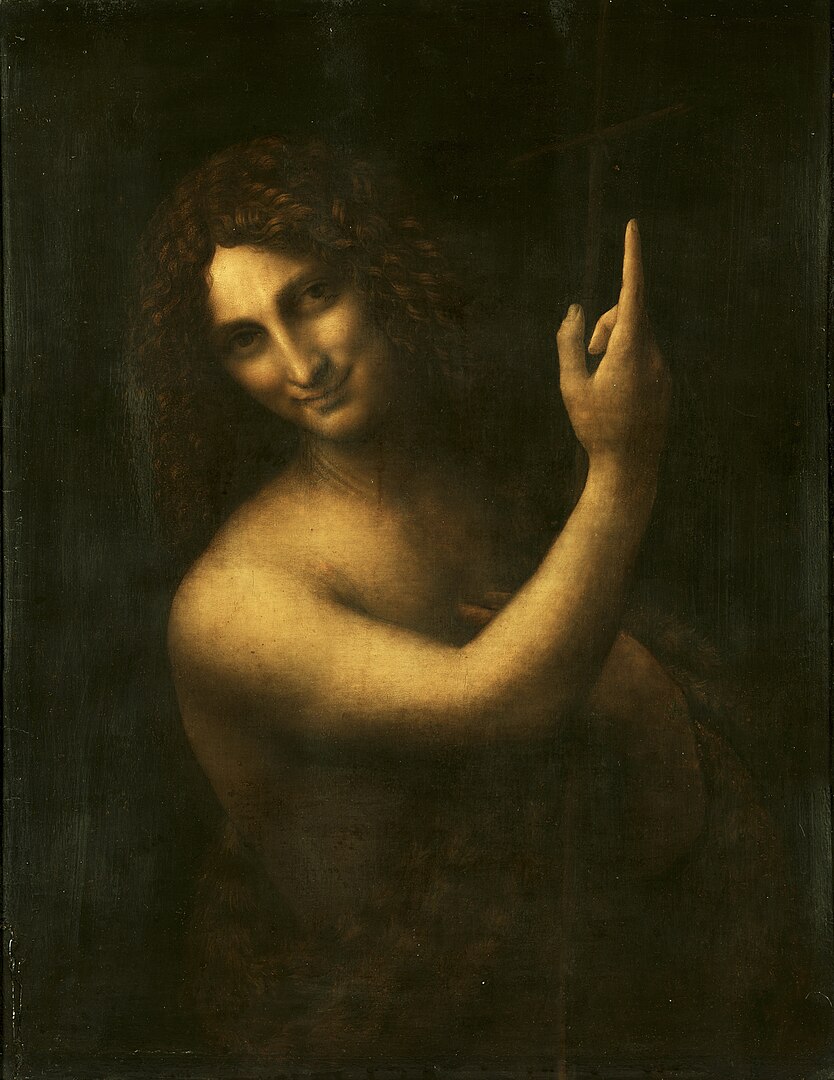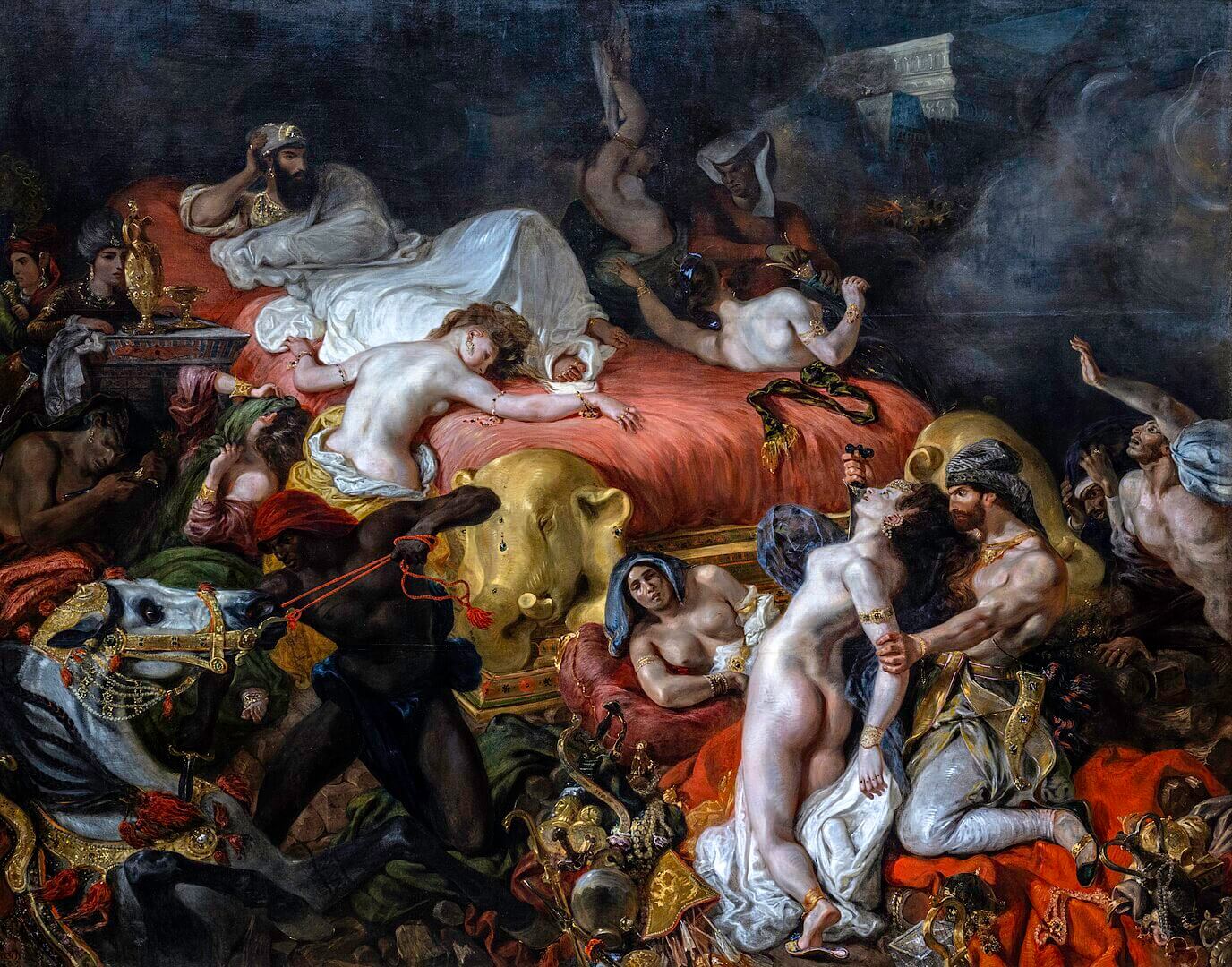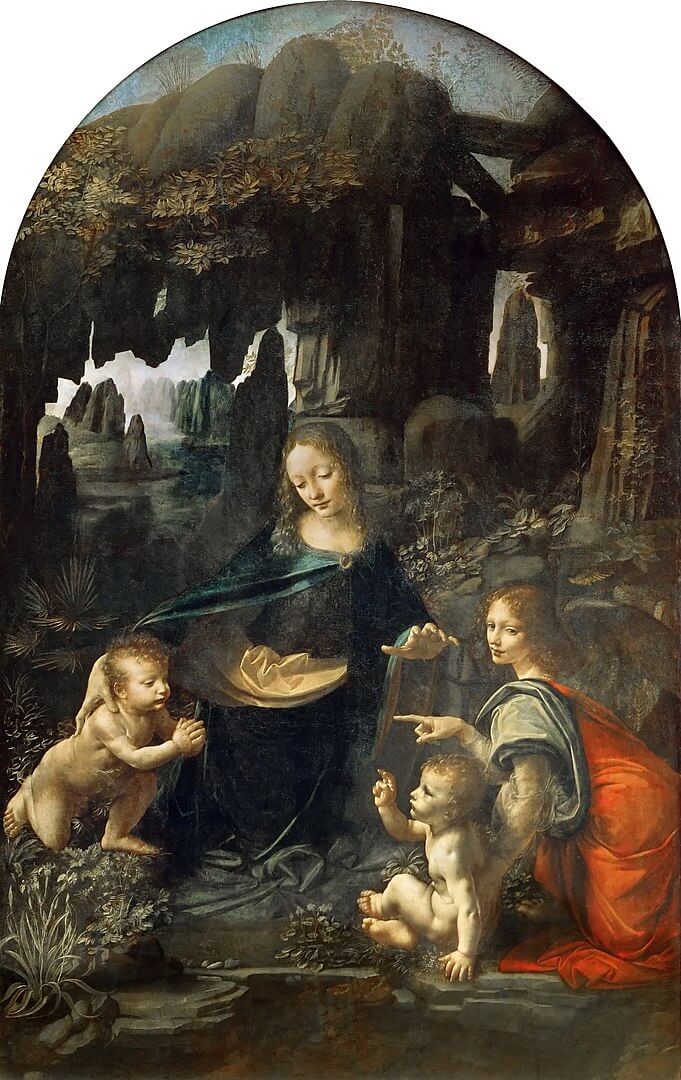After the success we had with our first article “10 masterpieces to see in Louvre Museum”, we’ve decided to expand it to include new works, equally important although less known to some people. When talking about the Louvre, the first pieces that come to our mind are the Mona Lisa and the Venus de Milo. However, the museum houses more than 2 million works, which will give us some room to write a few more articles on the subject :).
The Louvre is huge. You will probably need to visit it several times to take in its 2.1 million m2. So take note of the works below and try to find them during your walks through the museum.
It is also the most visited art museum in the world. You are sure to find many opportunities to practice your French, or even make some new friends.
1. The Oath of the Horatii
This monumental painting by Jacques-Louis David, created in 1784, exemplifies the Neoclassical style. With a dynamic composition, depicts a dramatic scene from Roman history. The painting unequivocally portrays three brothers swearing an oath to defend Rome, symbolizing unwavering loyalty and selfless sacrifice. David’s masterful use of sharp lines and strong contrasts undeniably amplifies the emotional intensity of the moment, rendering it an utterly captivating piece to behold.
2. The Lacemaker
This small and exquisite piece painted by Johannes Vermeer around 1669 is a gem of the Dutch Golden Age. It captures a young girl engrossed in her craft. Vermeer’s masterful use of light and color creates a serene atmosphere, showcasing the delicate details of the lace-making process. Here you can see Vermeer’s ability to convey intimacy and tranquility through his art and capture fleeting moments of everyday life.
3. The Card Players
This is a series of five paintings by Paul Cézanne created during the early 1890s. Not many people know but those are iconic works in the Louvre, showcasing Cézanne’s revolutionary approach to form and color. A quiet intensity and profound sense of stillness are transmitted while each piece portrays Provençal peasants immersed in their pipes and playing cards.
4. Lamassu collection
This collection of impressive Assyrian guardian figures, dating back to the reign of King Sargon II (721-705 BCE) offers a significant representation of Mesopotamian art and cultural beliefs.
Carved from stone, these colossal statues represent majestic winged bulls with human heads. Their size often reached over four meters in height, and that was meant to inspire awe and deter evil. Five legs are typically depicted, creating a sense of movement and power as if the lamassu were striding forward.
5. The Virgin and Child with Saint Anne
Leonardo da Vinci painted this unfinished masterpiece around 1510. The painting depicts Saint Anne, her daughter Mary, and the infant Jesus in a loving embrace. Leonardo’s skill in capturing human emotion and interaction shines through intricate details and gentle light-and-shadow contrasts. This approach to form and space broke new ground in art.
6. The Dying Slave
Image credit: Jörg Bittner Unna, Wikipedia
Michelangelo sculpted this piece between 1513 and 1516, and it ranks among his most renowned works. The figure of the dying slave represents human struggle and beauty. Michelangelo’s ability to express emotion through marble is clear in the figure’s lifelike anatomy and expressive posture. This makes it a remarkable example of Renaissance art.
7. The St. John the Baptist
Another remarkable work by Leonardo da Vinci, this painting from the early 16th century features St. John in a contemplative pose. Leonardo’s mastery of light and shadow is exemplified by the soft modeling of the figure and the atmospheric background. The painting’s enigmatic expression invites viewers to ponder the subject’s thoughts, creating a sense of mystery.
8. The Sleeping Hermaphroditus
Image Credit: Gian Lorenzo Bernini, Wikipedia
This is one of Louvre’s stars not many know. This ancient Roman marble sculpture (circa 2nd century AD) was inspired by a lost Hellenistic bronze (possibly by Polycles, 2nd century BC). This life-sized figure, sculpted in slumber, is both beautiful and enigmatic. One leg bent, the other relaxed, it embodies a peaceful yet androgynous form. The serene face adds to the mystery, leaving viewers to ponder human form and duality.
9. The Death of Sardanapalus
Eugène Delacroix completed this dramatic painting in 1827. This piece illustrates the legendary Assyrian king Sardanapalus in a despaired moment facing defeat. His vibrant colors and dynamic brushstrokes convey a sense of chaos and urgency. The emotional depth and theatricality of the scene make it a powerful representation of Romanticism.
10. The Madonna of the Rocks
Also called “The Virgin of the Rocks”, this mysterious painting by Leonardo da Vinci, created between 1483 and 1486, depicts the Virgin Mary, the Christ Child, John the Baptist, and an angel in a mystical, rocky landscape. The use of sfumato, his fascination with nature detailed anatomy, and serene composition reflect Leonardo’s unparalleled skill.
Conclusion
Visiting the Louvre Museum offers an unparalleled opportunity to experience these and many more masterpieces firsthand. Each artwork will tell you a unique story and reflect the cultural and historical context of its time. Include these ten remarkable pieces in your itinerary for a truly enriching experience.
On your next visit to the Louvre, venture beyond the crowd-pleasers and discover the hidden gems that make this museum a true treasure trove of human creativity and expression. And remember to put your French into practice throughout!
Want to study French in Paris and learn about art?
Discover one of the best art galleries in the world



